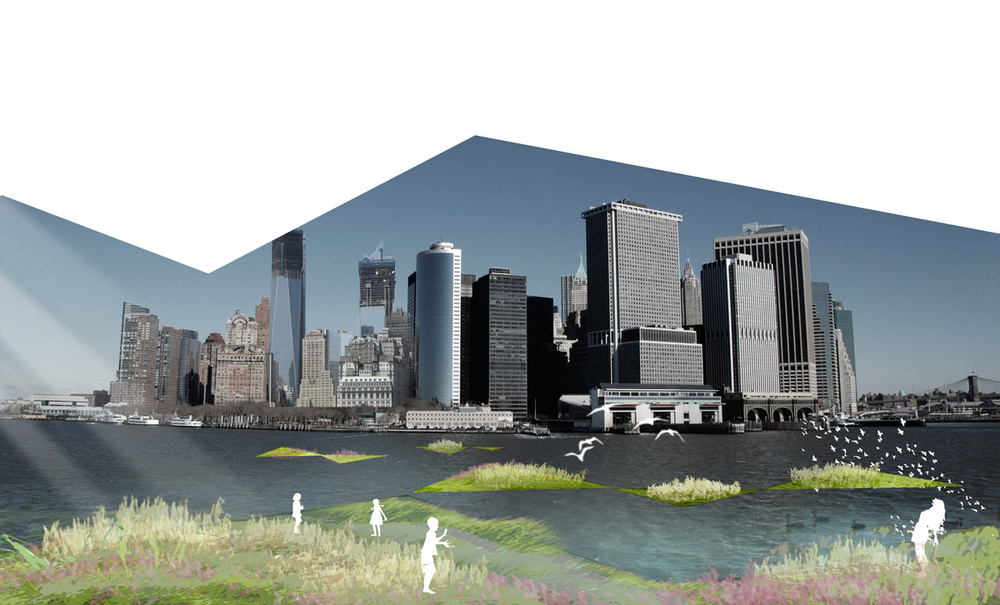

We propose to create a green edge of floating islands around Manhattan. A network of artificial islands is a productive, attractive, and cost-effective approach to create ecological infrastructure and new public space. Just as the great Aztecs produced agriculture on floating chinampas, or Bangladesh created societies around floating gardens, or just as Thailand’s floating markets attract tourists and drive the local economy, floating islands could be the future of open space in New York City.
There are several ecological benefits to a network of floating islands. The island module is expandable and flexible — it can be deployed to protect the city from storm surge and accommodate the rising sea level. They can be designed as a network of landscaped sponges that filter and clean the river. They can even provide a framework for new infrastructure to capture tidal energy.
Moreover, we can begin to look at their potential as productive agricultural spaces. The City could even develop a new market for specialty produce. There is a delicacy, La Bonnotte potato, from Íle de Noirmoutier, an island situated off the Atlantic Coast of France, that grows specifically in salt water.
Finally, and most importantly, they can provide fun and exciting opportunities for recreational public space. We imagine a network of islands equivalent to the size of Central Park around Manhattan. Like Central Park, this landscape will serve as a productive landscape infrastructure and innovative public space model for coastal cities in the 21st century.
Mark Thomann is the landscape design director with Balmori Associates where he has led the conceptual design and development of numerous international projects and strategic plans. He is on the Landscape Architecture faculty at the University of Pennsylvania School of Design.
Images: Balmori Associates.